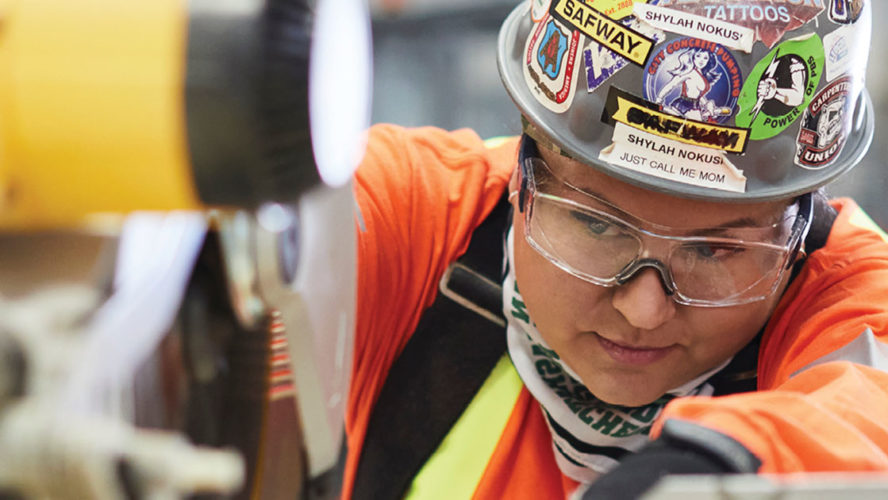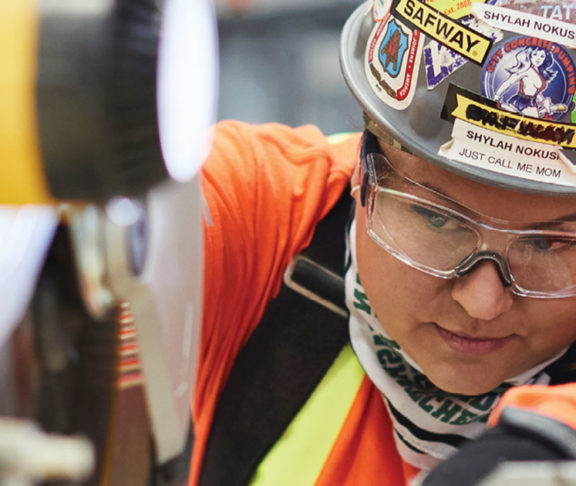
Mary Van Buren
President, Canadian Construction Association
The construction sector has evolved to include a huge range of career paths accessible to a diverse pool of individuals. Here’s how the CCA is driving home that message.
The construction sector may not be top of mind for the average Canadian, but when it comes to the health of Canada’s economy and infrastructure, it couldn’t be more crucial. Workers in construction — ranging from contractors and project managers to data researchers and scientists — help build, maintain, and improve the infrastructure that underpins Canadian life and industry. Over 1.4 million Canadians work in construction, and the sector represents about 7.5 percent of the country’s GDP. But due to worker shortages, the field is facing challenges that threaten its future.
A labour shortage looms large over the construction sector
The Canadian Construction Association (CCA), helmed by Mary Van Buren, represents 20,000 members. “CCA’s role is to advance best practices in the industry and to advocate for a resilient sector so that together, we can build a better Canada,” says Van Buren. “The association is where the industry can come together, talk through issues, and speak as one voice to the federal government.”
Among the most crucial issues facing the CCA — and by extension, every Canadian who relies on the work of its members — is an impending labour shortage. “One of the trends we’re seeing, which is true for many sectors, is that the baby boomers are retiring, and there aren’t as many new entrants as there were boomers,” says Van Buren. That could spell serious consequences for the critical infrastructure Canadians rely on.
Talent Fits Here highlights diversity in construction
Compounding the worker shortage is a lack of diversity — the field is still highly male-dominated. “The CCA conducted a business case for diversity, and it very clearly shows that when you have a more diverse workforce, the firm is more successful,” says Van Buren. “We started the Talent Fits Here campaign to break people’s perceptions of what they think construction is.” The initiative showcases the unique career paths of a range of individuals within the sector, challenging traditional narratives around what a construction worker looks like.
Encouraging inclusivity in the sector — besides benefiting individuals who may not otherwise feel encouraged to apply, including women and other underrepresented groups — helps foster innovation, increase employee productivity, reduce turnover, and encourage a positive safety culture. “In a respectful workplace, safety is improved because people feel more inclined to speak up,” says Van Buren.
There’s more to construction than meets the eye
“Beyond the demographic challenge, we’re seeing that construction isn’t necessarily a career of choice,” says Van Buren. To challenge that perception, Van Buren hopes the initiative will help showcase the wide variety of careers available in the field.
“I would encourage people to look beyond the surface. There’s not just one set of skills or requirements, so don’t count yourself out until you’ve really considered it.” From project managers, who work both on-site and in the office, to construction-focused researchers, data scientists, engineers, and even lawyers, there’s an enormous range of career possibilities.
“Whether in more traditional aspects of construction or newer paths, like sustainability and data science, we want to highlight a link to purpose,” says Van Buren. “Take the recent environmental disasters in British Columbia. Roadbuilders are out there helping their communities and making a real difference. People also take enormous pride in helping build something, like a bridge or community centre. Working in construction means you get to see a tangible outcome to the work you’ve done.”



